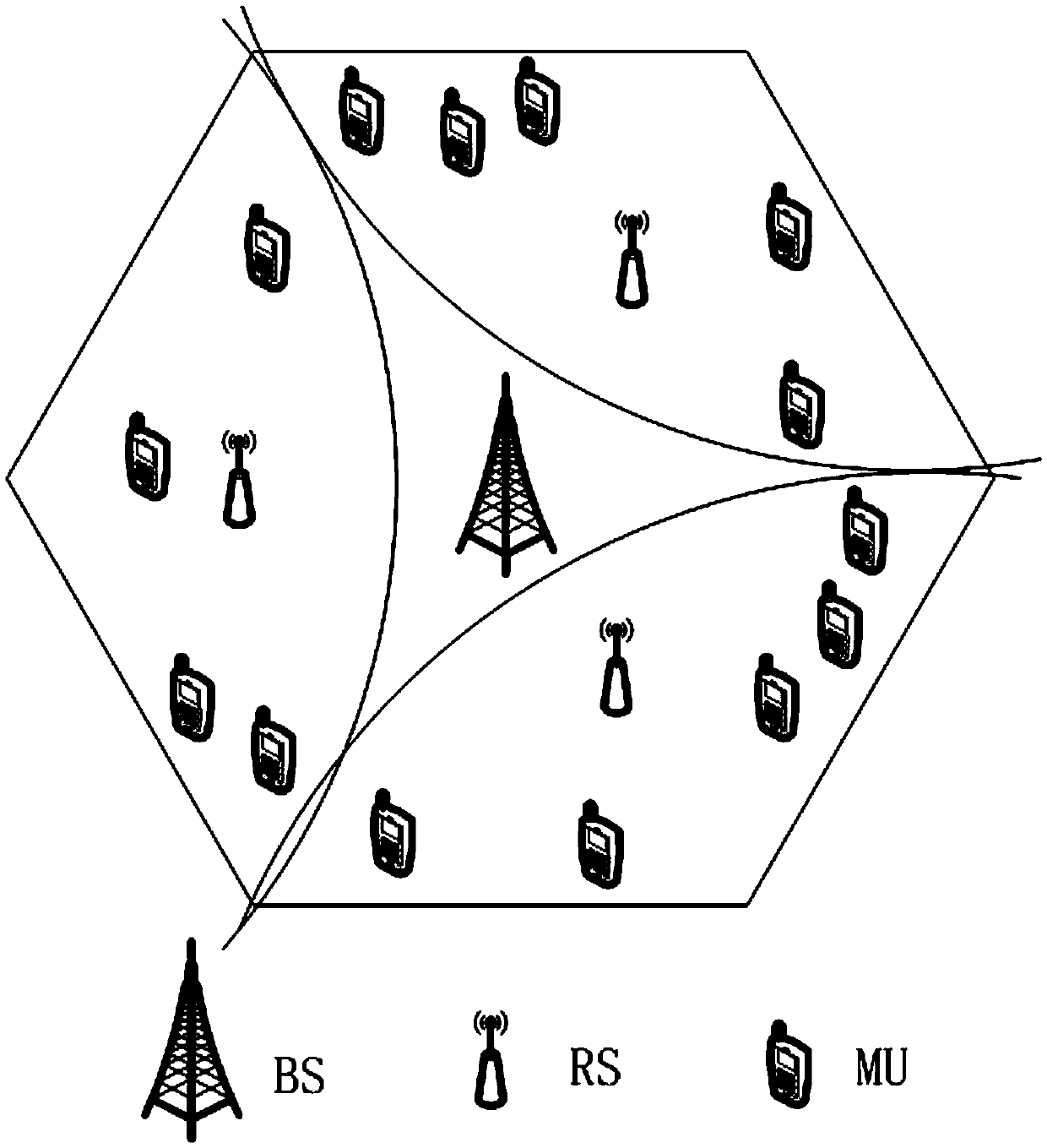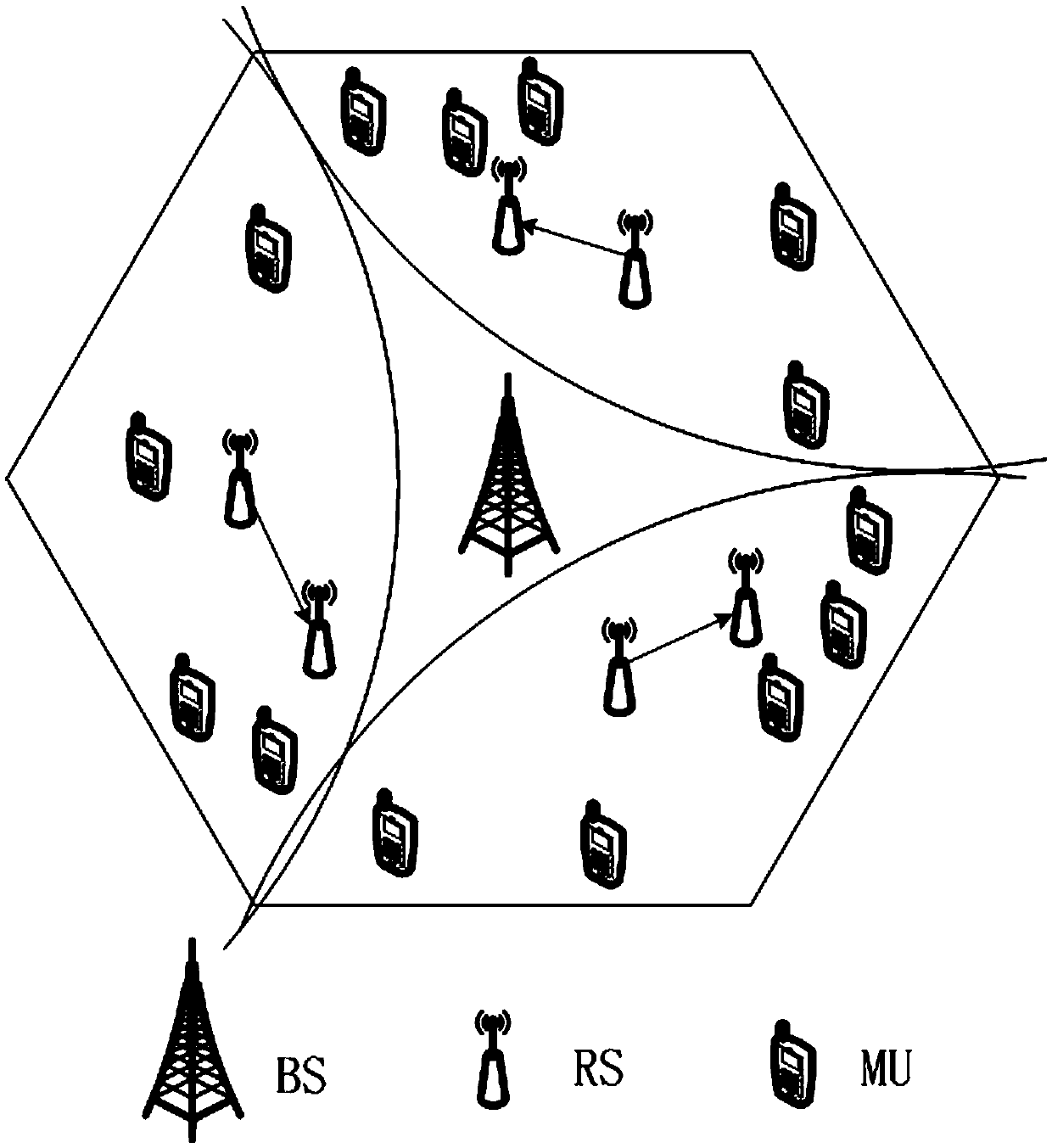Interference-suppression and energy-saving cellular network relay station deployment method
A network relay station and interference suppression technology, applied in the field of cellular network relay station deployment, can solve the problems of rarely jointly considering spectral efficiency, deployment cost budget, failing to achieve dynamic balance between spectral efficiency and energy efficiency, and difficult to achieve uniform and symmetrical deployment.
- Summary
- Abstract
- Description
- Claims
- Application Information
AI Technical Summary
Problems solved by technology
Method used
Image
Examples
Embodiment
[0058] A cellular network relay station deployment method for interference suppression and energy saving, comprising the following steps:
[0059] 1) Initialize the abscissa and ordinate of all candidate relay stations, namely where n is the number of candidate relay stations;
[0060] 2) Calculate and determine the users connected to each initial candidate relay station;
[0061] 3) Calculate the corresponding user coordinates belonging to the kth slot in an iteration;
[0062] 4) sum all user coordinates in the kth slot in step 3), and then average;
[0063] 5) According to the obtained position coordinates and number of candidate relay stations, combined with the predefined interference threshold distance value d T , establish the interference map between candidate relay stations, when the distance between the two relay stations is less than d T , it is considered that there is interference between the two relay stations, when the distance between the two relay station...
PUM
 Login to View More
Login to View More Abstract
Description
Claims
Application Information
 Login to View More
Login to View More - R&D
- Intellectual Property
- Life Sciences
- Materials
- Tech Scout
- Unparalleled Data Quality
- Higher Quality Content
- 60% Fewer Hallucinations
Browse by: Latest US Patents, China's latest patents, Technical Efficacy Thesaurus, Application Domain, Technology Topic, Popular Technical Reports.
© 2025 PatSnap. All rights reserved.Legal|Privacy policy|Modern Slavery Act Transparency Statement|Sitemap|About US| Contact US: help@patsnap.com



